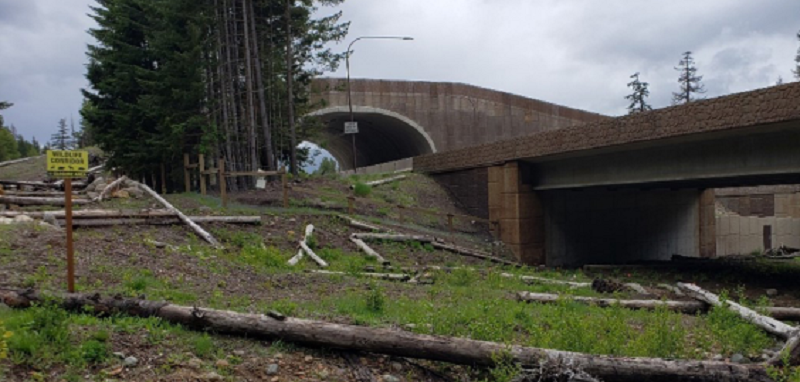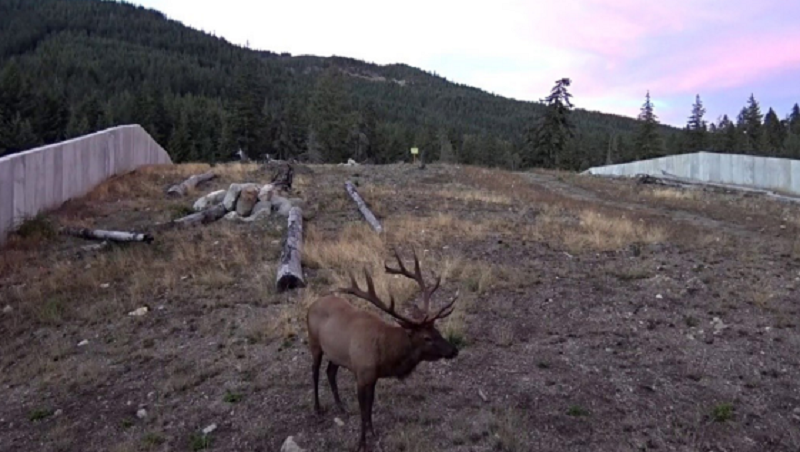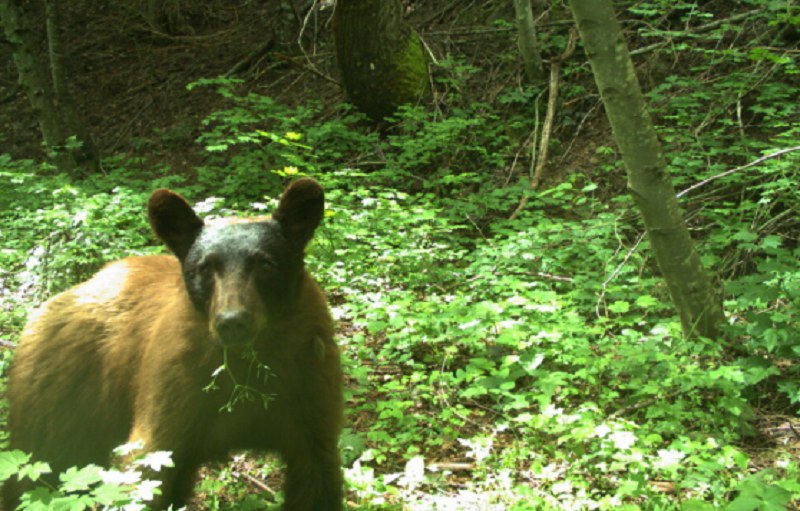Wildlife habitat connectivity - Fish and Wildlife Crossings
Performance analysis
2023
Terrestrial habitat connectivity and fish passage projects overlap in riparian corridors
The concepts of fish passage and terrestrial wildlife habitat connectivity are closely linked. Riparian corridors—where aquatic and terrestrial environments meet—comprise small portions of the landscape but provide vital ecosystem functions. These areas are commonly used by wildlife to travel between patches of suitable habitat, and in highly fragmented urban landscapes they represent some of the last remaining travel routes available.
Completing terrestrial wildlife habitat connectivity and fish barrier removal projects simultaneously leads to engineering efficiencies and cost-savings. Combining these projects typically results in only minor cost increases over the fish passage-only plans, while constructing standalone wildlife crossing structures would be significantly more expensive. Not all fish barrier removal projects offer the same potential benefits to terrestrial wildlife, and as a result, locations deemed important for terrestrial wildlife connectivity are ranked using WSDOT's Habitat Connectivity Investment Priorities. If a project falls in or adjacent to a one-mile segment ranked "high" for either ecological stewardship or wildlife-related safety, recommendations are made to enhance the new structure to include terrestrial wildlife passage.
This proactive approach to addressing terrestrial wildlife and fish connectivity needs simultaneously will protect valued wildlife resources for generations and enable a holistic view of the wildlife corridor planning process. Of the 32 fish barrier removal projects completed in 2023, nine were located in high priority areas and eight met or exceeded the minimum recommendations for terrestrial wildlife connectivity improvements.
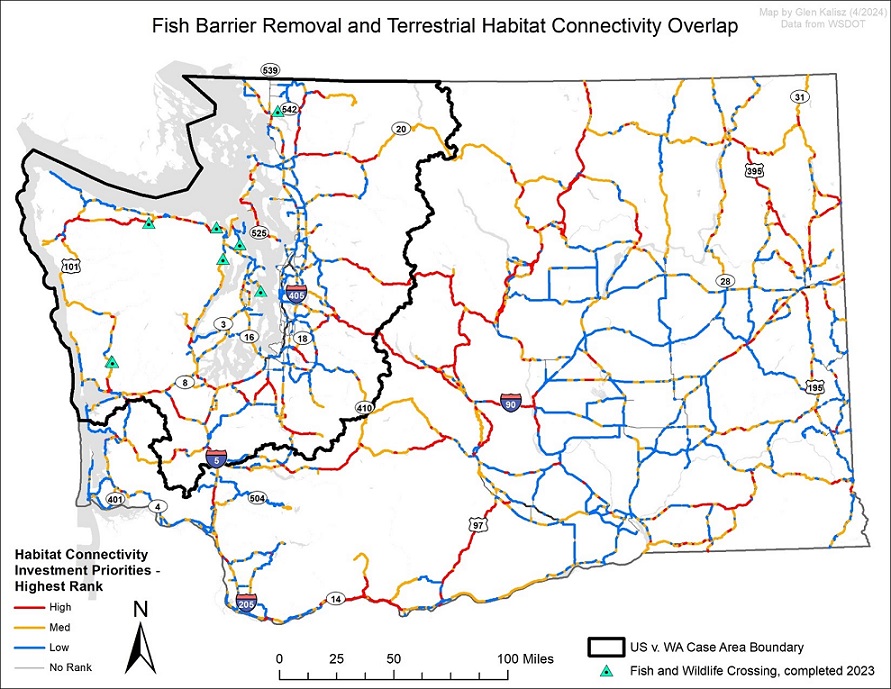
Interstate 5 Padden Creek Fish and Wildlife Underpass combines terrestrial and fish passage projects
The Padden Creek fish barrier removal project was completed in September 2022 on Interstate 5 near Bellingham and resulted in a wildlife underpass large enough to safely pass all terrestrial and aquatic animal species present. The new structure replaced a 420-feet long, four-feet wide box culvert. One year of preconstruction monitoring documented no black-tailed deer crossings, but many bobcat crossings, as bobcats are comfortable using small and long structures, but most species are not.
Analysis of post-construction monitoring data revealed a spike in black-tailed deer crossings, increasing from zero over the previous year at the old structure to 197 safe crossings in only four months of observation at the new structure. Those safe crossings are in addition to bobcats returning to the location and using the new structure to cross I-5 safely. Meanwhile, deer-vehicle collisions have dropped by approximately 50% within one mile of the Padden Creek underpass, an area known for above average deer-vehicle collision rates. While fencing along I-5 was not included in this project, adding it later could consistently decrease collisions by up to 90%.
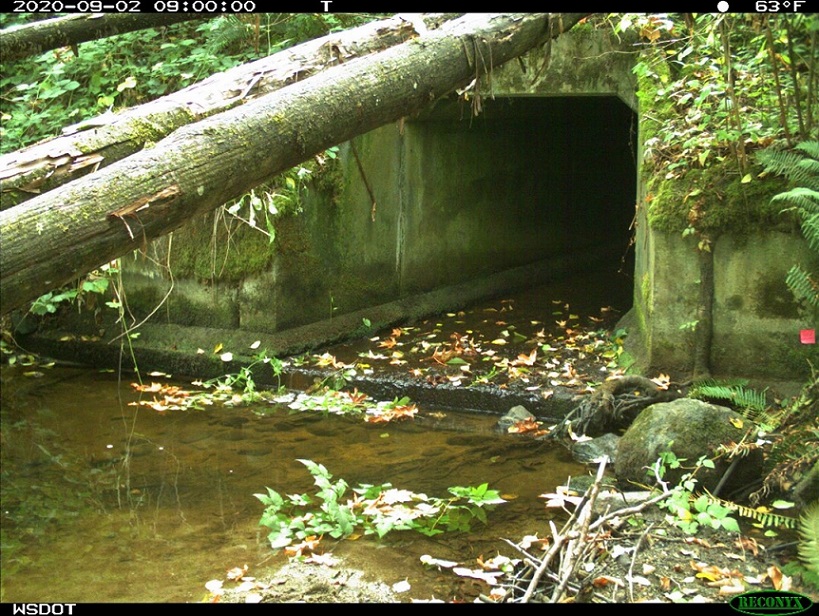
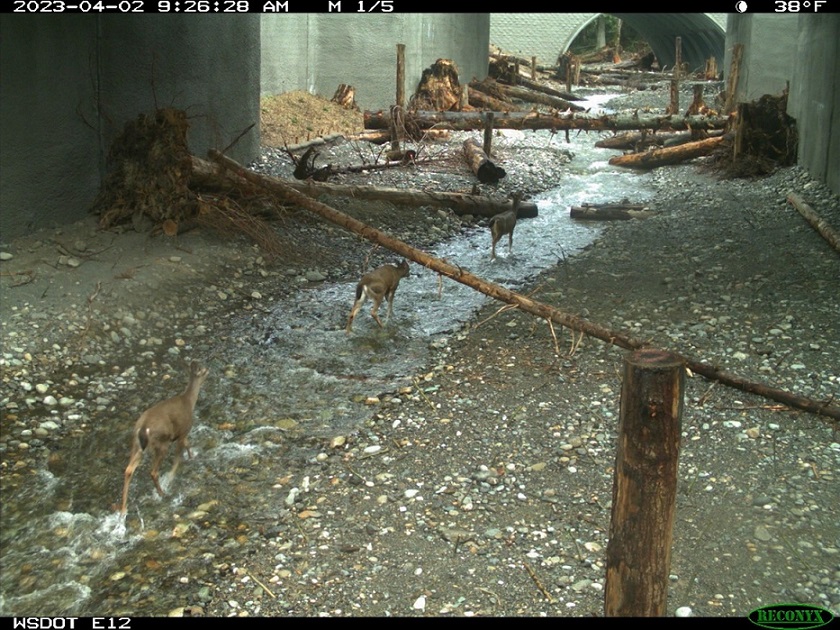
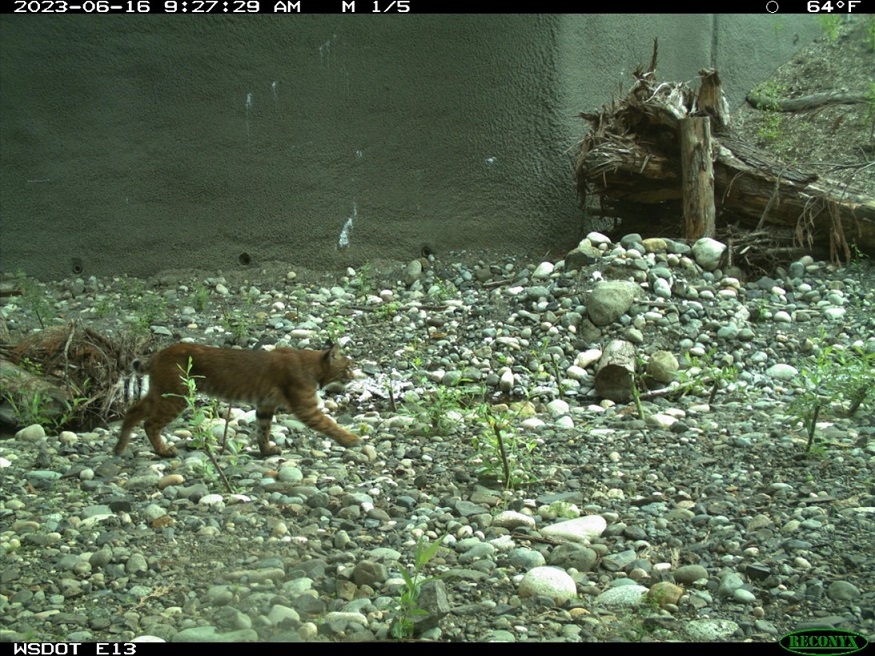
2022
Snoqualmie Pass East Project improves wildlife habitat connectivity
At the end of 2022, WSDOT recorded the 20,000th safe wildlife crossing by camera at completed structures within the ongoing Snoqualmie Pass East Project, where WSDOT and partners have built 11 large wildlife crossing structures so far. These crossings included 5,959 elk, 12,068 deer, 2,016 coyote and several crossings by rare species like moose, cougar, American marten, fisher, and American pika.
The Snoqualmie Pass East project is located along a 15-mile stretch of I-90 between Hyak and Easton. This corridor passes through the Okanogan-Wenatchee National Forest and is a critical connectivity zone for Pacific Northwest wildlife populations. Ecological connectivity components of the project include more than 20 large wildlife crossing structures, including two major overpasses, and continuous wildlife fencing throughout most of the project area. In addition to improving ecological connectivity across I-90, the project aims to fulfill multiple objectives, including reducing avalanche and rock fall impacts, replacing failing concrete pavement, and adding lanes to reduce congestion.
In August 2022, a moose was documented using a wildlife underpass within the Snoqualmie Pass East Project area to cross I-90, heading south. This moose was approximately 100 miles from its known core range. A couple weeks later, the first moose ever documented in western Washington was recorded in the Cedar River Watershed, and another couple months later, Mount Rainier National Park recorded its first ever moose visitor. While it can't be known with absolute certainty whether it was the same moose it is extremely likely. Wildlife underpass structures allow thousands of safe wildlife crossings annually and give animals opportunities to naturally expand their range into suitable habitats previously unreachable due to transportation infrastructure. Meanwhile, wildlife-vehicle collisions within the completed areas of the Snoqualmie Pass East Project dropped to a consistently low or non-existent level.
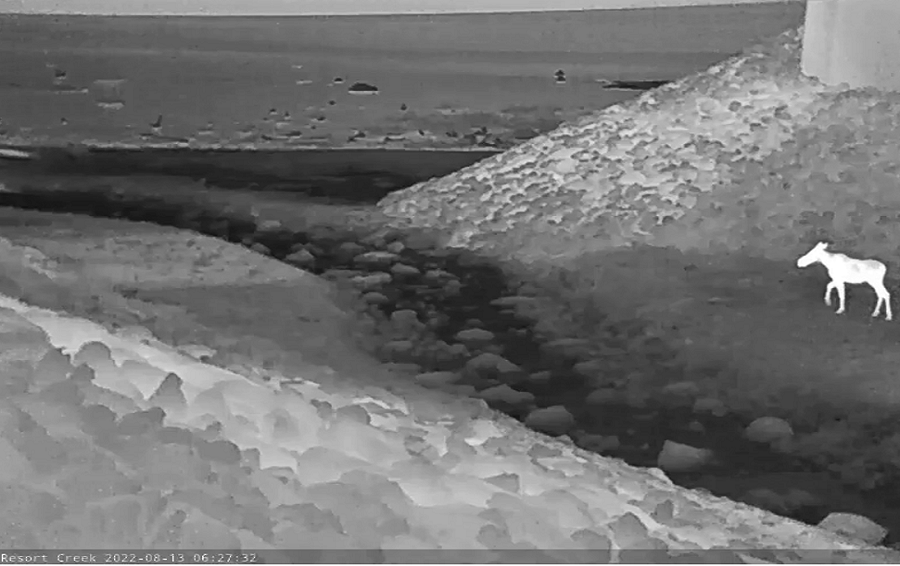
Monitoring teams from Central Washington University documented many small mammals, amphibians and fish utilizing the crossing structures, including western toads breeding in a wetland south of the overcrossing two years in a row, culminating in newly-metamorphosed western toadlets safely crossing I-90 using the same overcrossing. Furthermore, coastal giant salamanders and American pika were documented crossing I-90 at multiple structures, and federally-threatened bull trout were documented using holding pools beneath the Gold Creek Bridge.
The project's final two phases (Phases 3 and 4) will address the remaining portions of the corridor by installing seven additional large wildlife crossing structures, including a second overcrossing, and many small and medium-sized bridges and culverts for water and low-mobility species passage.
2021
Snoqualmie Pass East Project improves wildlife habitat connectivity
The Snoqualmie Pass East (SPE) Project is located along a 15-mile stretch of I-90 between Hyak and Easton. This corridor passes through the Okanogan-Wenatchee National Forest and is a critical connectivity zone for Pacific Northwest wildlife populations. The project aims to fulfill multiple objectives, includingreducing avalanche and rock fall impacts, replacing failing concrete pavement, adding lanes to reduce congestion, and improving ecological connectivity across I-90. The project will enhance ecological connectivity for multiple wildlife species at 14 connectivity emphasis areas. Ecological connectivity components include more than 20 large wildlife crossing structures, including two major overpasses, and continuous wildlife fencing installed throughout most of the project area.
Within the completed portions of the Snoqualmie Pass East Project, WSDOT and partners built 11 large wildlife crossing structures.
WSDOT recorded a minimum of 8,683 wildlife crossings by camera in 2020 and 2021. These included 3,202 elk crossings, 4,382 deer crossings, 764 coyote crossings and several low-density and rare species like cougar, American marten, fisher, and American pika taking advantage of the structures to safely cross I-90.
Monitoring teams from Central Washington University additionally documented many small mammals, amphibians and fish utilizing the crossing structures, including a radiotracked western toad that crossed using the overpass.
The final phases of the project will address the remaining portions of the corridor by installing seven more large wildlife crossing structures and many smaller culverts and bridges for water and low-mobility species passage.
